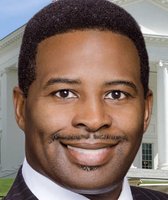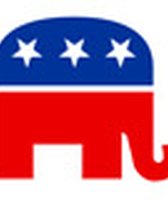Stand up for the facts!
Our only agenda is to publish the truth so you can be an informed participant in democracy.
We need your help.
I would like to contribute
PolitiFact Virginia listened in on the final debate Friday night between the four candidates running in the June 12 Republican primary for the U.S. Senate.
We were familiar with many of the candidate’s claims and thought we would review how they’ve fared on the Truth-O-Meter.
Jamie Radtke: "I’ve come up with a play called `My Two-Cents’ that would end the deficit and balance the budget in five years."
Radtke’s plan would freeze federal spending at current levels and then cut it by 2 percent a year until the budget was balanced. It assumes that the Bush tax cuts will be extended at the end of this year and that the Alternative Minimum Tax will be indexed for inflation, as Congress has done in the past.
We recently took Radtke’s 2 percent idea and assumptions, and applied them to the CBO’s latest baseline projections. ,
This fiscal year, which ends Sept. 30, the federal government is expected to spend $3.64 trillion and collect revenues of $2.46 trillion. Under Radtke’s proposal, the red ink would disappear during fiscal 2016, when spending would be pared to $3.36 trillion and revenues would come in at $3.47 trillion. That means that in four years there would be a $110 billion surplus.
But Radtke sugarcoats her tough proposal by comparing it to cutting a child’s allowance by two pennies. Her program of 2 percent cuts does not account for the mandated increases in the costs of Social Security, Medicare and Medicaid. While she says she would be cutting about $282 billion over four years, Congress would really need to cut $742 billion from programs as they now exist.
Her program would actually require cuts in current programs going far deeper than anything proposed by even House Republican budget writers in their war against spending. That makes Radtke’s plan highly unrealistic.
E.W. Jackson: President Barack Obama’s health care plan will impose "a 3.8 percent real estate tax."
Very few people will be affected by the 3.8-percent levy, due to kick in next year. It doesn’t apply to individuals making less than $200,000 in the year of sale or couples with less than $250,000 in adjusted gross income. That makes the levy irrelevant to 98 percent of tax filers, according to the Tax Foundation.
Next, it’s not like the real estate tax levied by local governments. As PolitiFact National has written, the federal levy applies only to the profit of a home sales. And if the property you're selling is your primary residence -- and not a second home, vacation home or rental property -- you can turn a profit of $250,000 ($500,000 for couples) before the tax kicks in.
So consider a couple who sells their home for $1 million after buying it many years ago for $100,000. If they their adjusted gross income is less than $250,000 that year, they will pay no new tax.
George Allen: During Tim Kaine’s four years as governor, "tuition went up by over 30 percent."
Tim Kaine is unopposed for the Democratic nomination for the U.S. Senate. He was governor from 2006 to 2010. We reviewed his record on tuition in a recent Truth-O-Meter.
The average costs for in-state tuition and instructional fees at four-year institutions -- not including room and board -- rose from $3,812 in the 2005-2006 school year to $5,003 in 2009-2010, according to the State Council of Higher Education for Virginia. That’s a 31.2 percent increase.
The average cost for tuition and instructional fees at Virginia’s community colleges rose from $2,182 in the 2005-06 school year to $2,716 in 2009-10, according the SCHEV.
A large reason for the increase in tuition was that Kaine and the General Assembly reduced higher education funding as part of their plan to balance the state budget during a recession.
Virginia’s experience was not unique; tuition and fees for in-state students at four-year public universities rose across the nation during Kaine’s term. The U.S. Department of Education said the national average increased by 23 percent during that span, the College Board says they rose by 29 percent.
Our Sources
See hyperlinks.












































